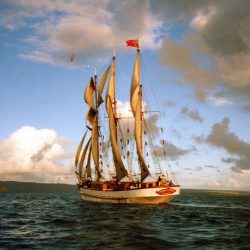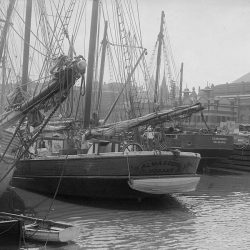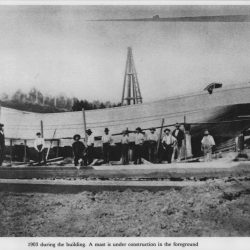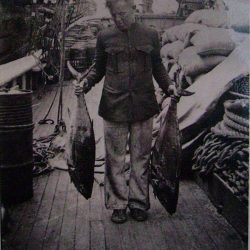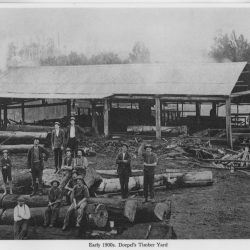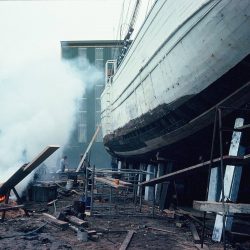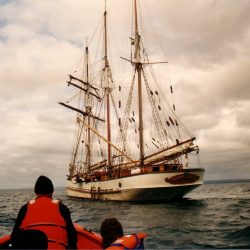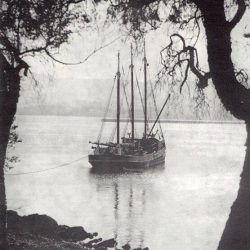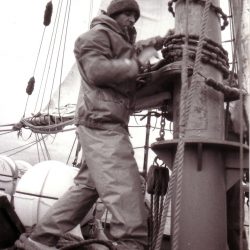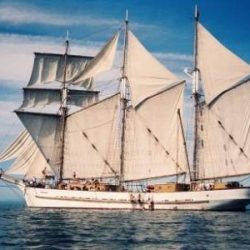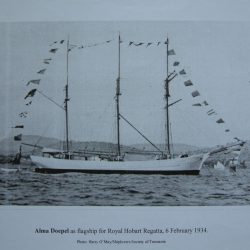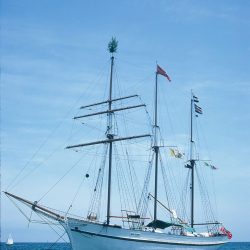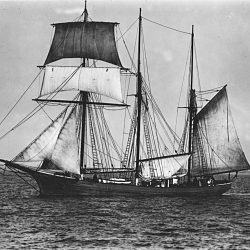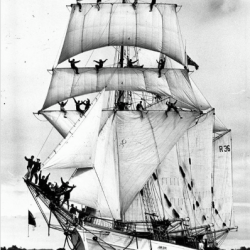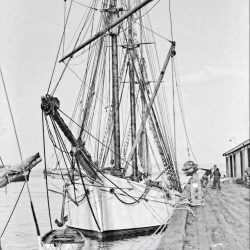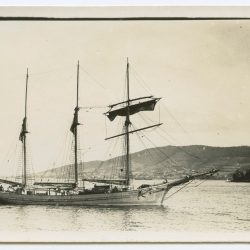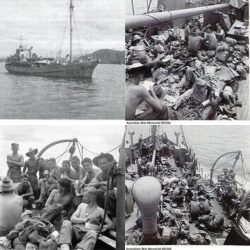But finally, after lying idle for 12 months, she was bought in 1976 to be restored as a youth training ship. The purchase by Sail & Adventure began the modern struggle, which would bring the romance of yesteryear to Port Phillip and the concept of Youth Sail Training to Australia. Sail & Adventure Limited is the company formed as a non-profit organisation to carry out the restoration and to operate this floating maritime museum and youth program.
Initial restoration was slow. The ship was taken to Williamstown where supporters spent 17 months cleaning the hull below decks, preparing the ship for restoration and working hard to raise funds.
In May 1978 the Port of Melbourne Authority allowed the use of berth and store facilities at 2 North Wharf and this proved to be a turning point and restoration moved forward at a great pace with the construction of a new deck, bulwark posts and a hand-rail.
The lower masts and rigging were completed in December 1979. The keel and rudder were replaced in mid-1980 and the upper mast and rigging prepared by the end of January 1981.
By January 1982 the twin centre plate casings had been fitted together with a keel slipper and the replacement of faulty hull planking was completed. The following summer of 1982/83 saw the ship carrying her three yards on the fore mast. Below deck the structural bulkheads and ballast had been installed.
In early 1984 Alma Doepel appeared under square sail on the fore mast for the first time since 1937. During 1984/85, progress on structural work was frustrated by a tough period for fund raising. Nevertheless, pulley blocks and other running rigging were completed for carrying full sail. Protective sponsons were fitted to the hull and a full hydraulic system fitted to the anchor winch. The necessary design work and drawings required for Maritime Board Survey proceeded. Supporters erected a visitor reception area at the construction berth at No. 20 Victoria Dock Melbourne and cut flooring from huge Cyprus logs obtained from Queenscliff.
The 1988 Australian Bicentenary Celebrations sparked renewed interest in tall ships and, after lengthy discussions, a sponsorship package was offered by Elders IXL and Alma was taken to Adelaide for completion of the deck, accommodation and engineering fit-out. This was accomplished in time for Alma Doepel to join the tall ship fleet for the celebrations in Sydney.
Upon her return to Port Phillip, sail training voyages commenced in earnest. Between 1988 and 1999 Alma Doepel completed around 140 nine-day Youth Sail Training Voyages with more than 4000 young Victorians having the opportunity to sail before the mast. Many more experienced the joy of sailing on board a tall ship during day and weekend sails.
By 1999 Alma Doepel had again fallen on hard times and in 2001, during a time of change within the organization, Alma Doepel was relocated to Port Macquarie as a display alongside Lady Nelson Wharf. She provided a visitor attraction but inspections revealed serious damage to the planking from Toredo (ship-worm) that was likely to see her end her days as a shipwreck.
In January 2009, the renewed Board of Sail & Adventure Limited decided to bring Alma Doepel back to Melbourne for the extensive restoration required for return to operation as a sail training ship. The City of Melbourne, Places Victoria and Lend Lease were instrumental in providing berthing and workshop areas and local companies including Hempel Australia have provided in-kind contributions. Generous private donors continue to support the project and our many volunteers have recorded over 30,000 hours of work towards returning this unique and historic vessel to an operational level.
Please consider becoming part of our support team and see Alma Doepel once again working as a youth sail training ship in Port Phillip.

